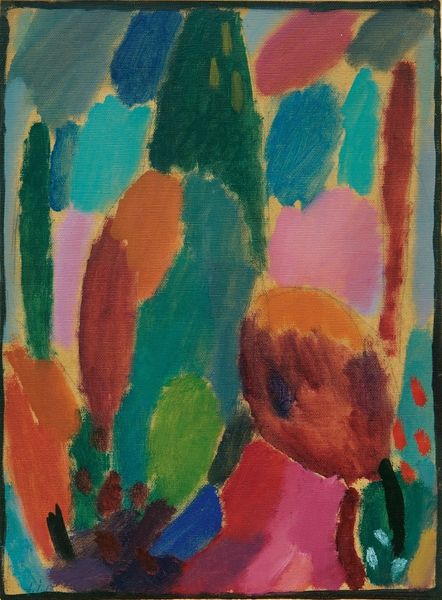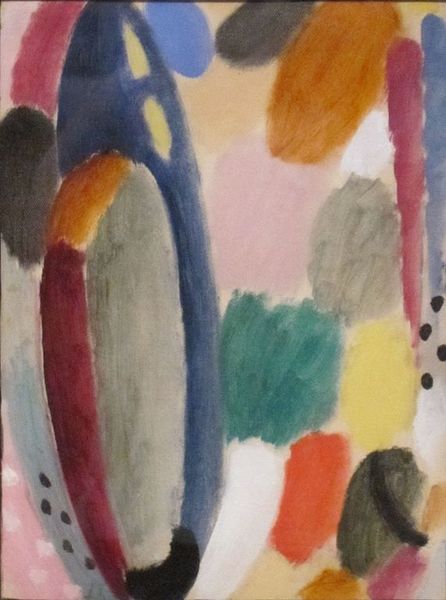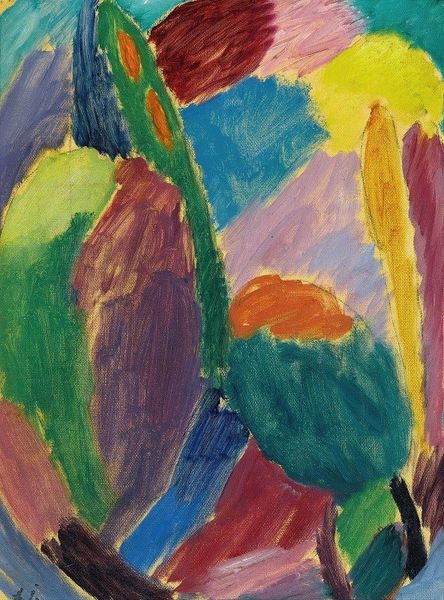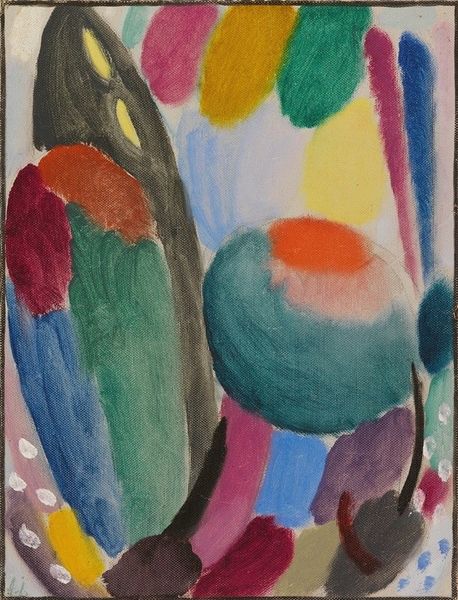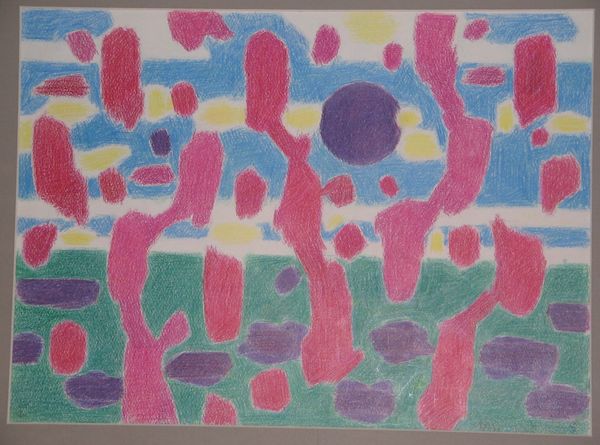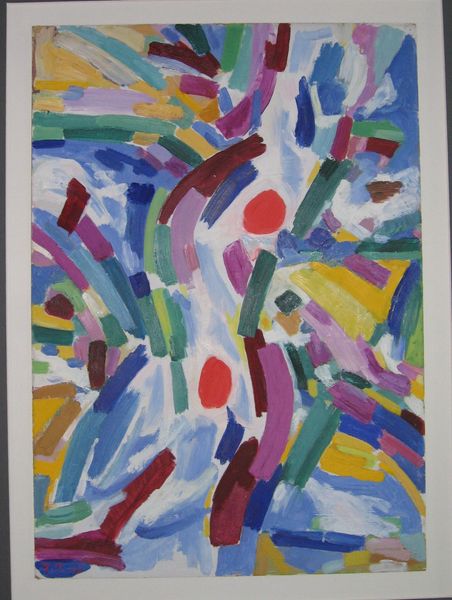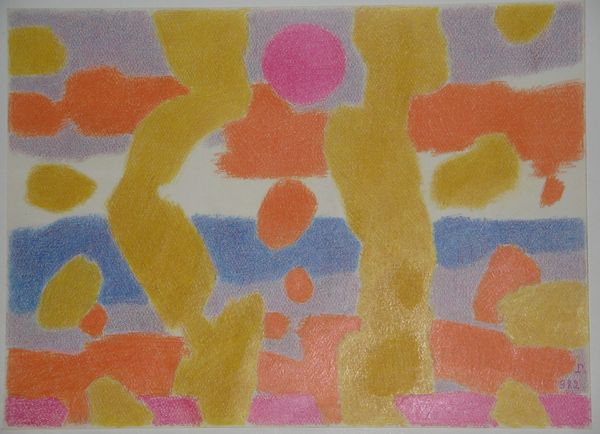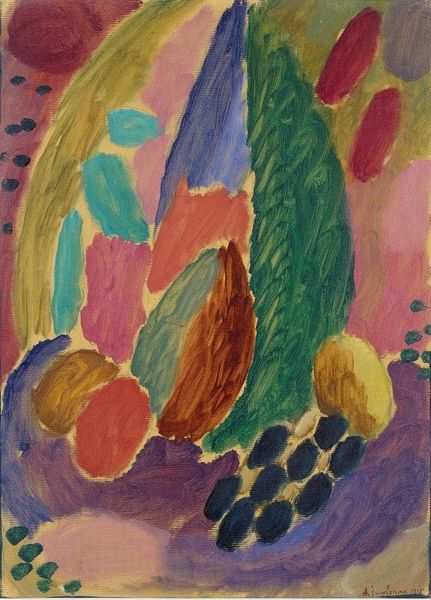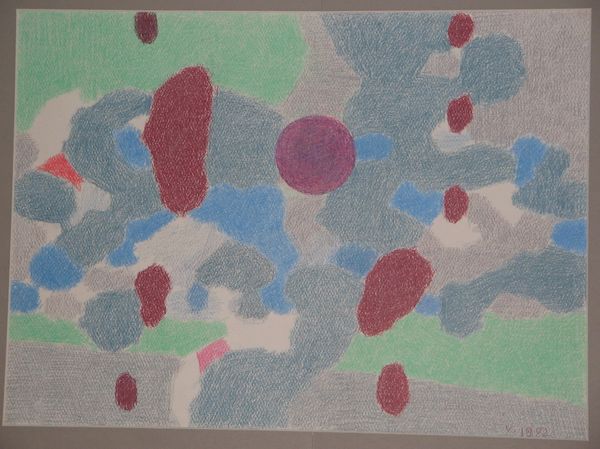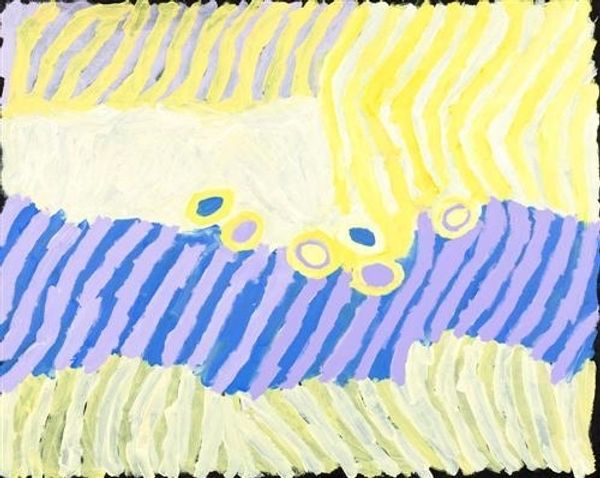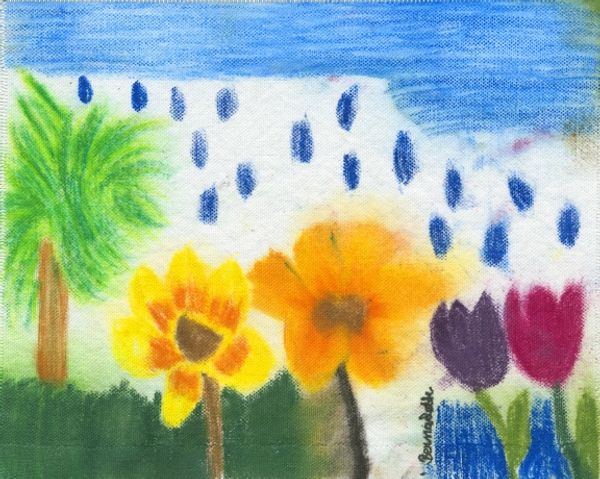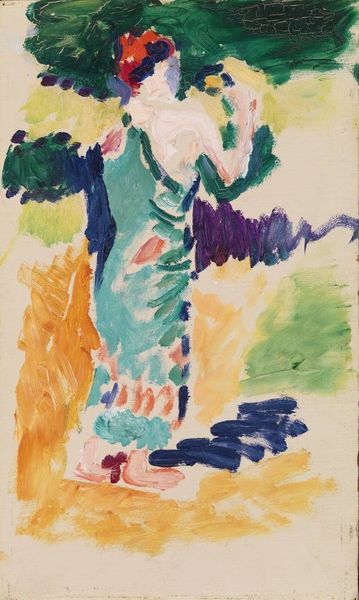
Dimensions: overall: 27.3 x 36.2 cm (10 3/4 x 14 1/4 in.) framed: 55.3 x 46.4 x 4.8 cm (21 3/4 x 18 1/4 x 1 7/8 in.)
Copyright: National Gallery of Art: CC0 1.0
Editor: We're looking at "Red Path, St. Prex," painted by Alexej von Jawlensky in 1915 using oil paint. It feels like a landscape, but broken down into blocks of pure color. What strikes you about it? Curator: It's fascinating how Jawlensky, working during a time of immense social upheaval – World War I was raging – turned to Fauvism to explore his inner world. Look at how the materiality of the paint itself becomes the subject. How do you see that playing out? Editor: Well, you can see the individual brushstrokes, thick and separate. It doesn't feel like he's trying to create an illusion of depth or realistic textures. Curator: Precisely. This challenges the traditional notion of landscape painting as a window onto the world. Jawlensky seems more interested in the physical act of applying paint to canvas. Consider the colors - vibrant, yes, but also manufactured. How do these industrial pigments speak to the rapidly changing world he inhabited? Editor: So, the bright colors aren't just about capturing the beauty of nature? They're also a sign of the times, pointing towards new, artificial materials? Curator: Exactly. These pigments were products of industrial chemistry, reflecting the changing landscape of material production. Even his technique, building up the canvas in blocks of color, echoes industrial processes of construction and assembly. How does considering the socio-economic implications impact your interpretation? Editor: I guess it makes me see the painting as more than just a pretty picture. It becomes a record of how the world was being remade by industry and war, filtered through the artist's individual experience. It’s more about a world he's consuming and responding to, materially. Curator: Yes, by emphasizing process, material, and color over the specifics of place, he connects art to the realities of its making, reflecting a broader cultural shift. What a striking lens into history! Editor: Absolutely. Thinking about the materials and the social context makes this artwork so much more powerful and relevant. Thanks for the insightful comments!
Comments
No comments
Be the first to comment and join the conversation on the ultimate creative platform.
